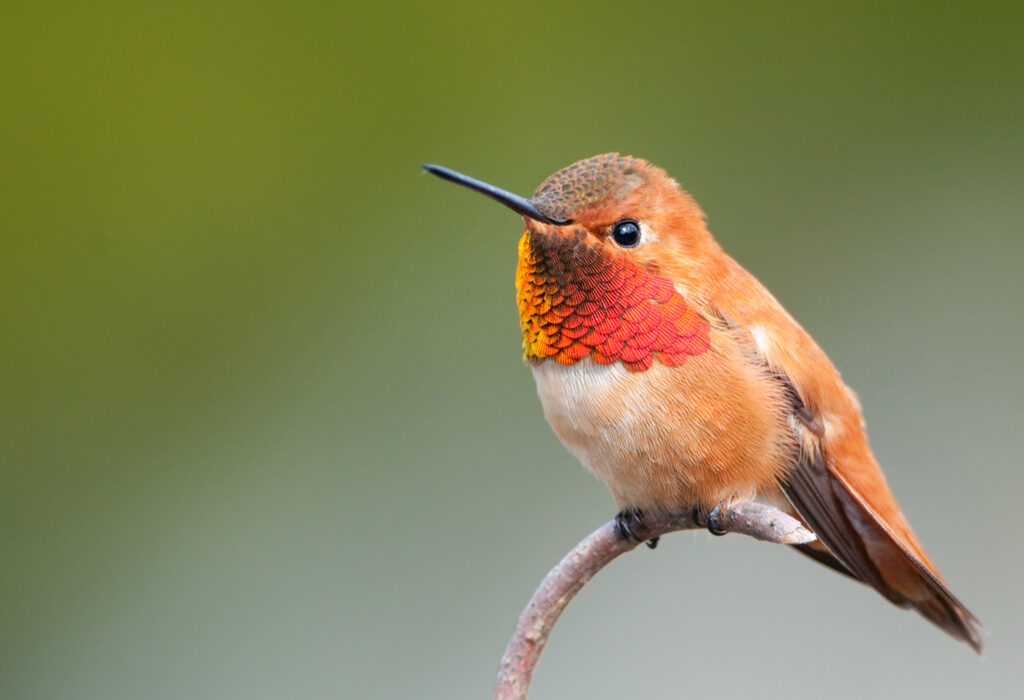
Hummingbirds will dine on aphids in the garden. Set up feeders for the birds to attract them to your yard and help control pests. iStock photo
The following gardening problem comes from Helen and Dave:
We have three keyhole gardens that have been very happy up until this last planting, when the aphids or some other small flying thing took bites out of our lacinato kale and such. Crazy, since no one likes kale, right?
What kind of flower can we plant interspersed through the gardens to discourage bugs? Whatever we plant can’t be invasive or bushy to take up too much space.
We did all of the organic home remedies, but the bugs just had a good laugh.
Looking forward to your sage advice. — Helen, lazy Master Naturalist.
From the Luedeckes:
Helen, to deter "laughing" aphids from your keyhole gardens, we would suggest planting basil, spearmint, garlic, or onion sets. Clover, mint, dill, fennel, and yarrow attract insects that are predators to aphids. Catnip, garlic, chives, onion, and allium are aphid repellers.
You probably don't want catnip in your keyhole garden — that would be trading one nuisance for another. The mint would be low enough not to hinder the beauty of your garden. Yarrow and allium perhaps?
What we would HIGHLY suggest is setting up hummingbird feeders. They LOVE aphids and other small flying things. Last year, after the freeze, aphids were chowing down on a large ash tree in the backyard to the extent that having to cut it down was a possibility. Then, the hummers came, and all aphid and small flying pests problems were solved.
PRE-EMERGENT
Scott of Lake LBJ asks: “My question is about Bermuda grass (celebration). I live on Lake LBJ and irrigate my lawn with lake water. Last year was the first year of my lawn, and the Bermuda never really “greened up." It also had A LOT of weeds, especially nutsedge.
From the Luedeckes:
Scott, start by applying corn gluten meal as your pre-emergent. Corn gluten not only acts as a pre-emergent, it also will add nutrients to your soil to help your Bermuda “green up."
The recommended rate is a minimum of 20 pounds per 1,000 square feet. After you spread corn gluten, water it in with one-half to three-fourth inches of water.
Regarding your nutsedge, apply Medina molasses with a common kitchen spray bottle to the affected area. The molasses attracts beneficial soil microorganisms that will eat the nutlets attached to the root of the nutsedge. You will probably need to apply the molasses 2-3 times, but after a few weeks, it should yellow. Then, lift the plant out of the soil. You’ll notice no roots or nutlets, and you’ll be increasing the health of your soil.
You can purchase corn gluten meal at your local nursery, supply, or feed store. Call around because it flies off the shelves this time of year. Medina molasses comes in 1-gallon containers.
And make sure to keep your avian watering holes fresh and full.
Til next time. Keep your souls and soles in your garden! Remember the True Master Gardener: Jesus said, “I am the vine; my Father is the Gardener.” John 15:1
"In the Garden" is written by father-daughter duo Bill and Martelle Luedecke and Bill Luedecke. Contact Martelle at 512-769-3179 or luedeckephotography@gmail.com. Contact Bill at 512-577-1463 or bill@texasland.net.











